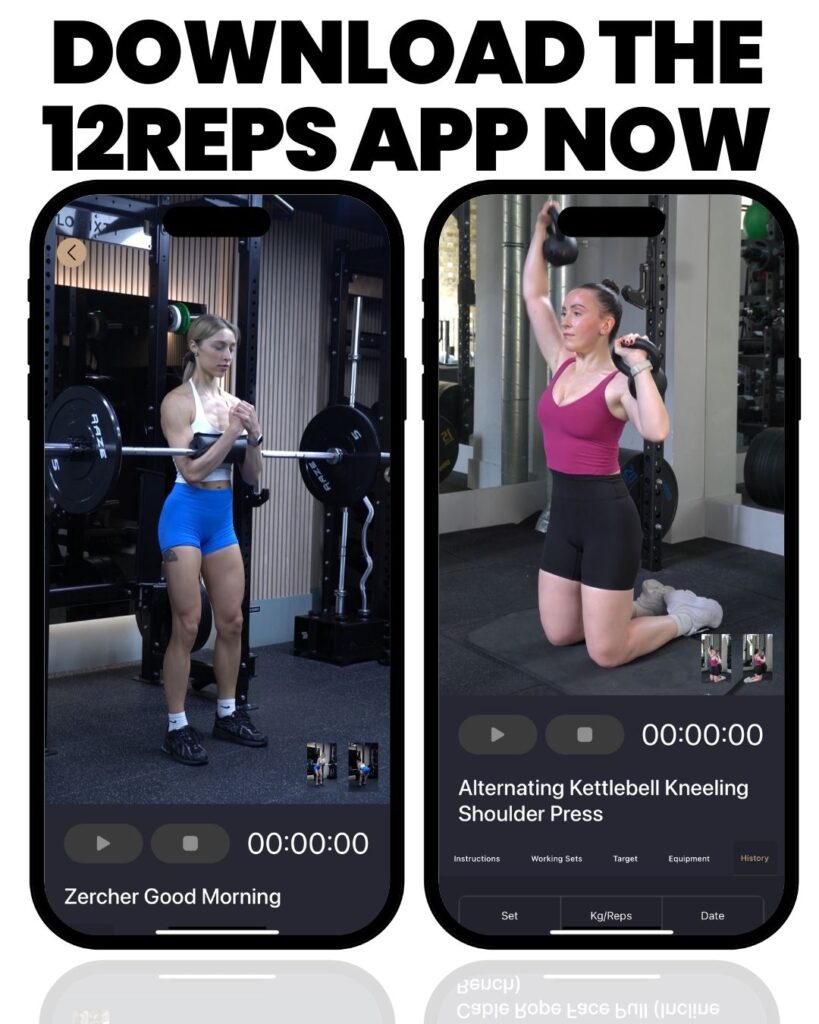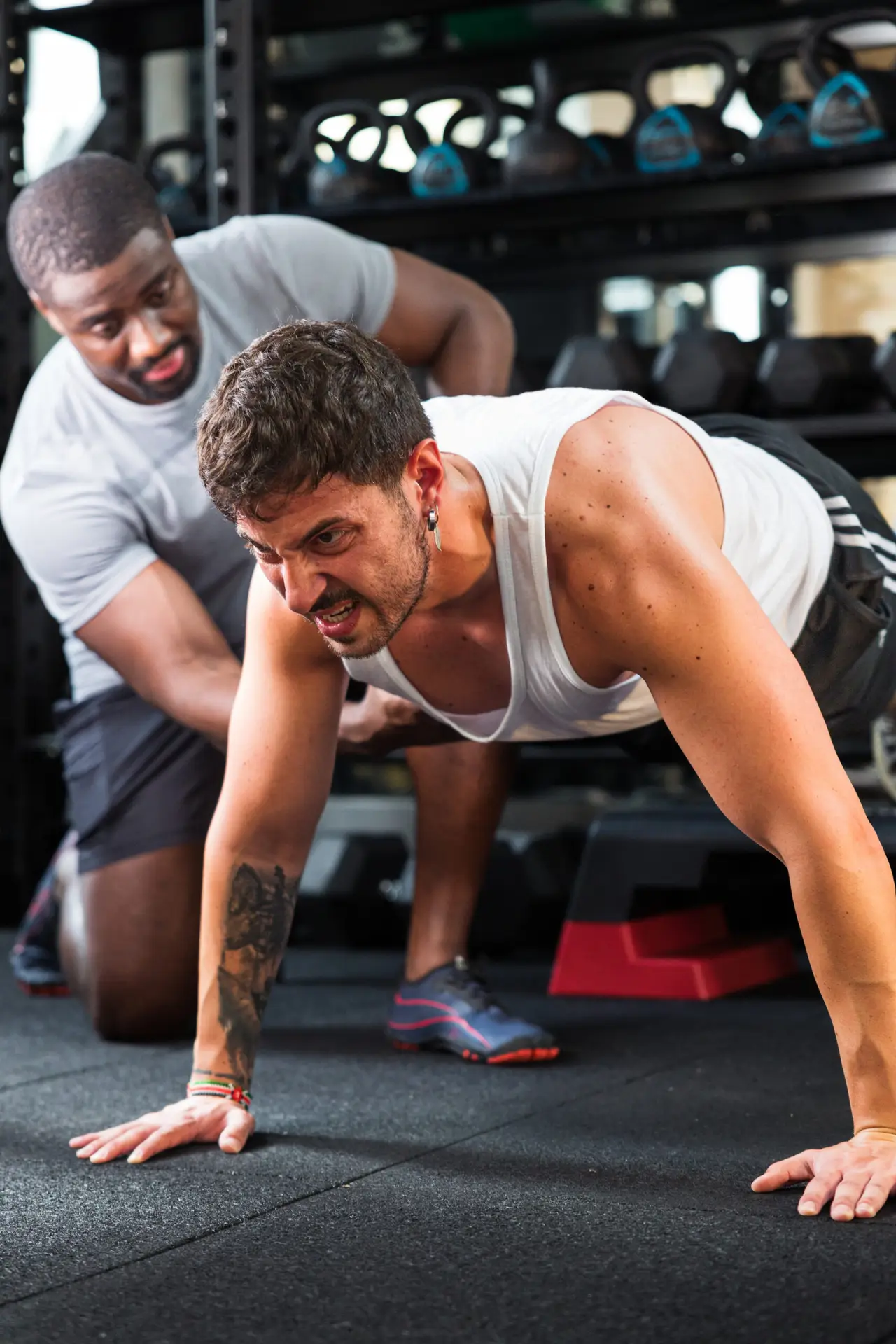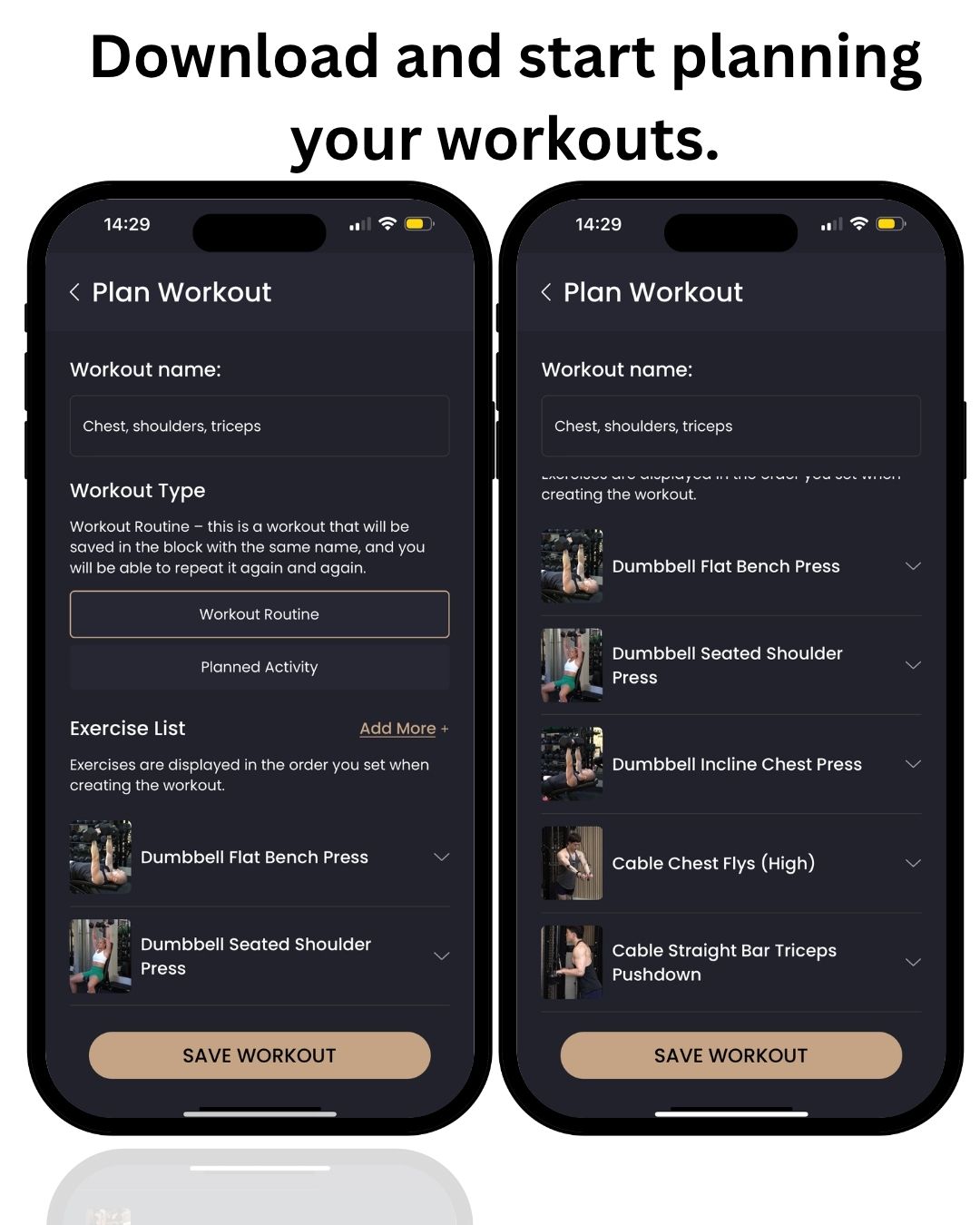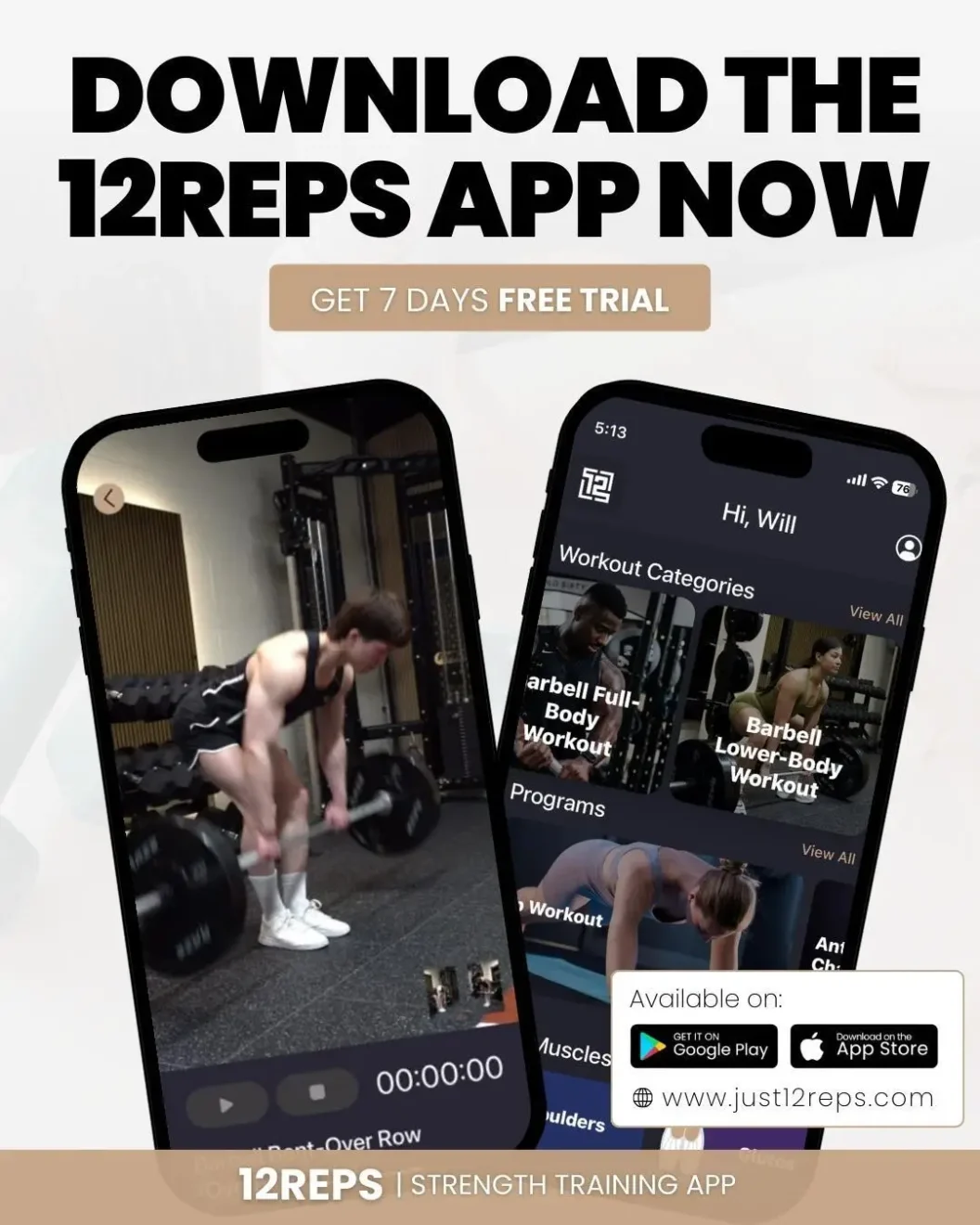Written by Will Duru, BSc (Hons) Sport and Exercise Science, Award-winning Level 3 Personal Trainer.
“I can’t do strength training anymore – my knees hurt too much.” That’s what Sarah told me when she first walked into my London gym three years ago. At 58, this former marathon runner thought her days of strength training were over. Six months later, she was deadlifting 60kg and had never felt stronger. The secret? Low-impact strength training that worked with her body, not against it.
As a personal trainer with over a decade of experience, I’ve worked with everyone from professional athletes recovering from injury to recreational runners looking to prevent it. What I’ve learned is this: you don’t need to stress your joints to build serious strength and muscle.
Low-impact strength training isn’t about compromising your results. It’s about training smarter. Whether you’re dealing with joint pain, recovering from injury, or want to build strength without the wear and tear, this approach can transform your fitness journey.
In my years of training clients across London – from City professionals with desk-related postural issues to weekend warriors managing old sports injuries – I’ve seen how proper low-impact training can build remarkable strength while improving joint health. This isn’t about limitation; it’s about liberation from the “no pain, no gain” mentality that keeps too many people on the sidelines.
This guide will show you exactly how to build muscle and strength using joint-friendly methods backed by exercise science. You’ll discover why low impact doesn’t mean low intensity, learn the essential exercises that form the foundation of safe strength training, and get a complete 6-week program designed to build real strength while protecting your joints.
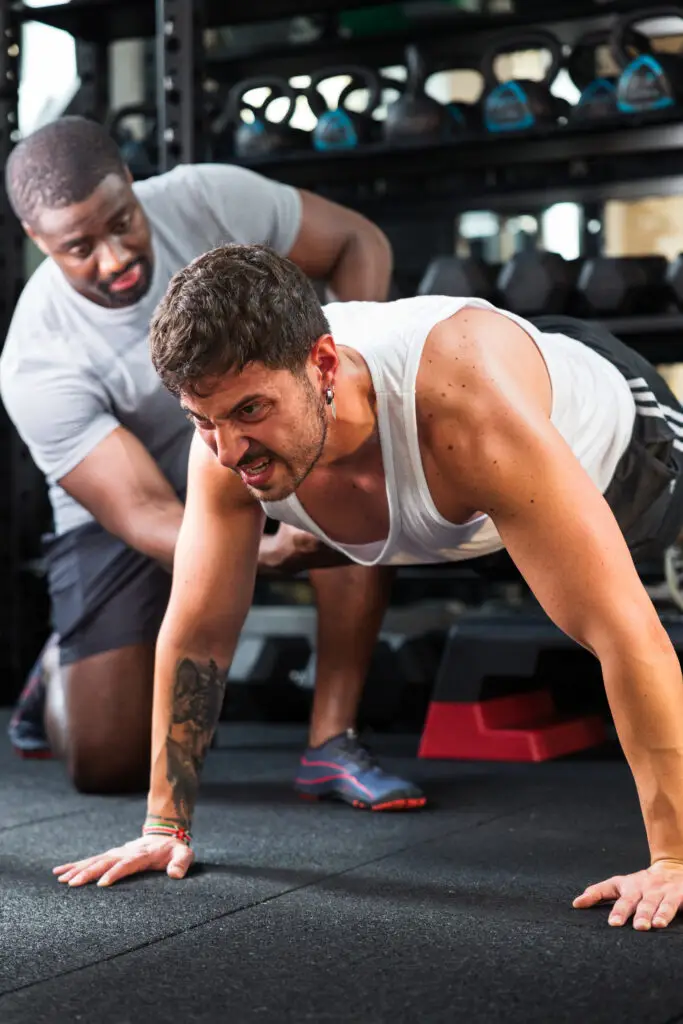
Understanding Low-Impact Strength Training
What Makes Strength Training ‘Low Impact’?
Low-impact strength training focuses on controlled movements that minimise stress on joints while maximising muscle activation. Unlike high-impact activities that involve jumping, bouncing, or explosive movements, low-impact training emphasises smooth, deliberate motions with proper support and alignment.
The key difference lies in how forces are applied to your body. High-impact training creates sudden, jarring forces that can stress joints, ligaments, and tendons. Low-impact training distributes these forces more evenly and gradually, allowing your muscles to work hard while your joints stay happy.
This doesn’t mean the training is easy. Some of the most challenging workouts I design for my clients are completely low impact. The intensity comes from time under tension, progressive resistance, and precise movement control – not from pounding your joints into submission.
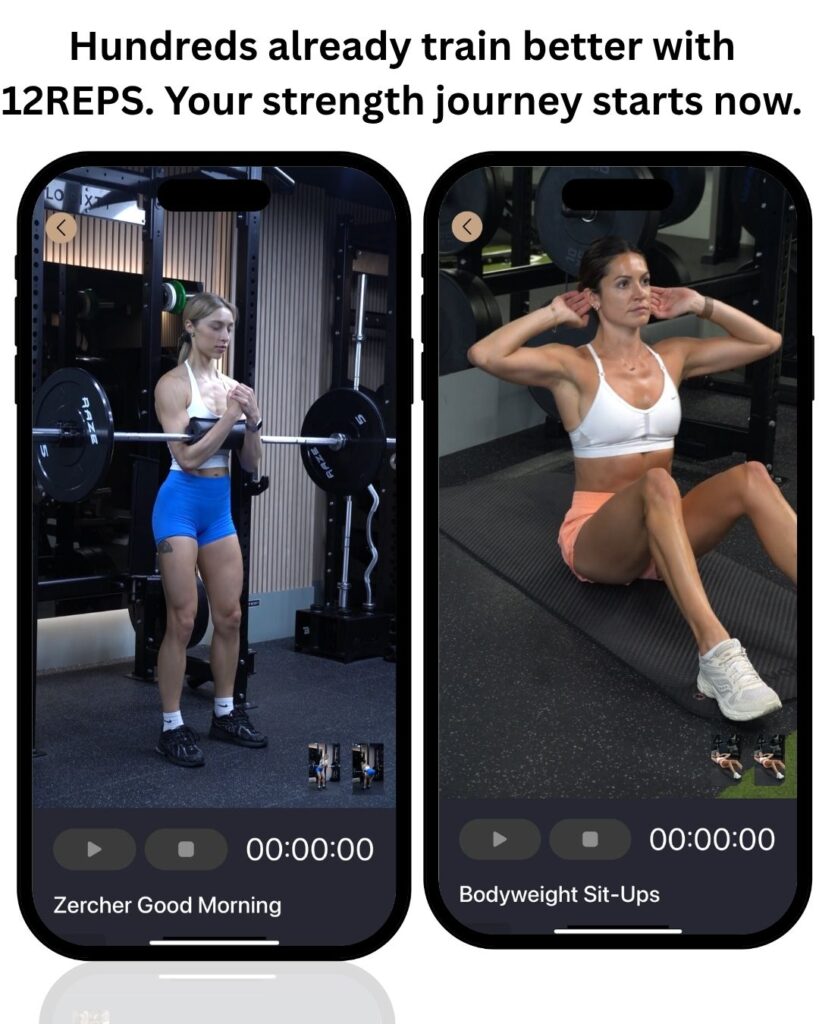
The Science Behind Joint-Friendly Resistance Training
My background in Sport and Exercise Science taught me that muscle growth occurs through three primary mechanisms: mechanical tension, metabolic stress, and muscle damage. The beautiful thing about low-impact training is that we can achieve all three without compromising joint health.
Mechanical tension – the force your muscles generate against resistance – is enhanced when you slow down movements and focus on control. When you perform a slow, controlled squat with perfect form, your muscles work harder than if you bounce up and down quickly.
Metabolic stress occurs when muscles work in an oxygen-depleted environment, creating the “burn” that signals growth. Isometric holds, slow eccentrics, and higher repetition ranges all create significant metabolic stress without joint impact.
The controlled nature of low-impact training also improves proprioception – your body’s awareness of position and movement. This enhanced body awareness reduces the risk of injury and improves movement quality in daily life.
Debunking the ‘No Pain, No Gain’ Myth
One of the biggest misconceptions in fitness is that practical training must hurt. This outdated thinking has kept countless people from experiencing the benefits of strength training. The truth is that muscle fatigue and joint pain are distinct sensations.
Muscle fatigue – that burning sensation when your muscles are working hard, is productive. Joint pain, sharp pains, or discomfort in your knees, shoulders, or back is your body’s warning system telling you to stop.
In my decade of training experience, the clients who make the most progress are those who learn to distinguish between productive muscle work and counterproductive joint stress. They train consistently because they’re not constantly dealing with aches and pains.
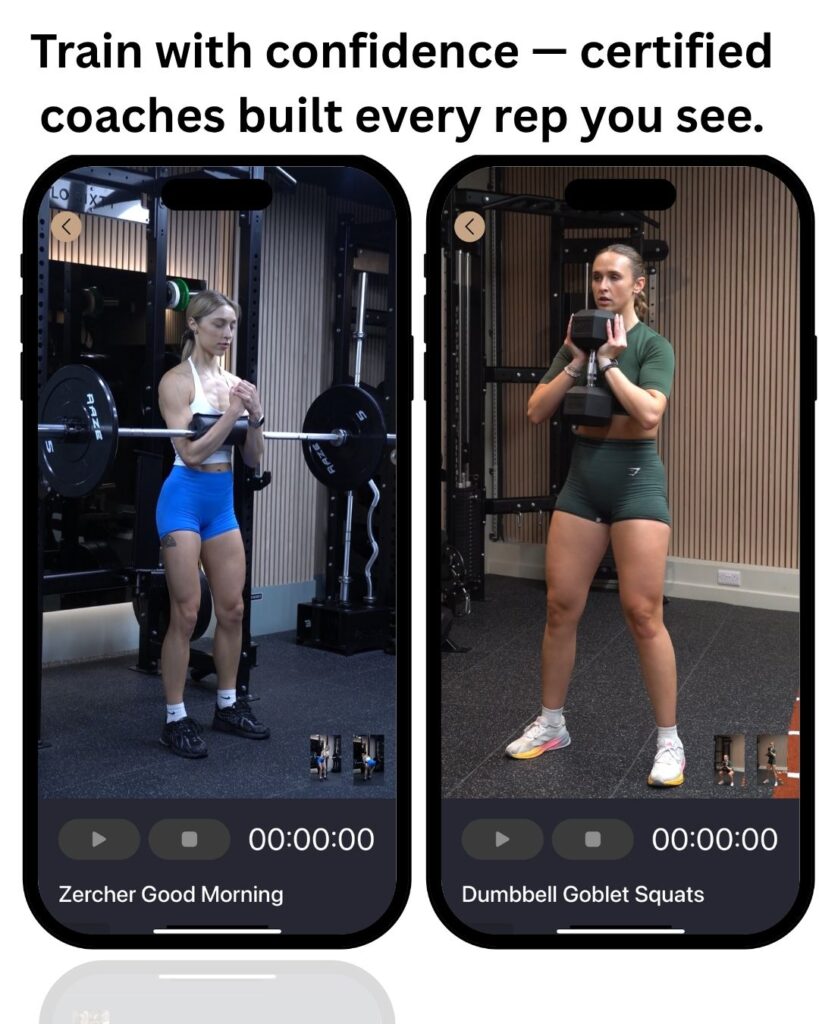
Who Benefits from Low-Impact Strength Training
Professional and Recreational Athletes
Athletes recognise that strength training is essential for optimal performance and injury prevention. However, many sports already place significant stress on joints through activities such as running, jumping, cutting, and contact. Adding high-impact strength training can push athletes over their recovery threshold.
I’ve worked with professional footballers, marathon runners, and weekend tennis players who all benefit from low-impact strength training. It allows them to build the strength they need for their sport while preserving their joints for competition and training.
For recreational athletes, low-impact strength training provides the foundation for lifelong participation in their chosen activities. A runner who builds strength through controlled, joint-friendly exercises is far less likely to develop overuse injuries than one who ignores strength training altogether.
Injury Recovery and Prevention
Low-impact strength training is invaluable during the recovery from injury. It allows you to maintain and build strength in unaffected areas while protecting injured tissues. More importantly, it helps address the movement compensations and muscle imbalances that often contribute to injury in the first place.
I’ve seen clients with knee injuries discover that their problems stemmed from weak glutes and tight hips. Low-impact training allowed us to address these issues without aggravating their knee pain. The result? Not only did their knee pain resolve, but they became stronger than before their injury.

The Science of Joint-Friendly Muscle Building
How Muscles Grow with Low Impact Training
Muscle growth, or hypertrophy, occurs when muscle protein synthesis exceeds muscle protein breakdown. This process is triggered by the mechanical stress placed on muscle fibers during resistance training. The key insight from exercise science is that this stress doesn’t require high-impact forces.
Time under tension is one of the most powerful drivers of muscle growth. When you perform a slow, controlled movement, your muscles must work continuously throughout the entire range of motion. This sustained tension creates significant mechanical stress and metabolic demand.
Research shows that eccentric contractions – the lowering phase of a movement – are particularly effective for building muscle. In low-impact training, we can emphasise these eccentric contractions by slowing down the lowering phase of exercises. A 3-4 second lowering phase can make a bodyweight squat more challenging than a fast repetition with added weight.
Progressive Overload Without Joint Stress
Progressive overload – gradually increasing the demands placed on your muscles – is crucial for maintaining and enhancing strength gains. Most people think this means constantly adding weight, but there are many ways to progress without increasing joint stress.
You can increase time under tension by slowing down movements or adding pauses. You can increase volume by adding sets or repetitions. You can increase frequency by training more often. You can decrease rest periods to increase metabolic stress. You can improve the range of motion to increase the stretch on muscles.
I’ve had clients achieve remarkable strength gains using only bodyweight exercises by manipulating these variables. A client who starts with wall push-ups can progress to incline push-ups, then full push-ups, then single-arm push-ups – all without ever touching a weight.
The Role of Bodyweight Training
Bodyweight training is the ultimate low-impact method for building strength. Your body provides the perfect amount of resistance for your current strength level, and the movements are inherently functional since they mirror real-life activities.
The beauty of bodyweight training lies in its scalability. Every exercise can be modified to match your current ability level. Can’t do a full push-up? Start with wall push-ups. Too easy? Progress to single-arm variations or add pauses and slow tempos.
For athletes, bodyweight training builds the kind of strength that directly transfers to sport performance. The ability to control and move your own body through space is fundamental to athletic success. Many of the strongest athletes I know can perform advanced bodyweight movements that would challenge even the most experienced individuals.
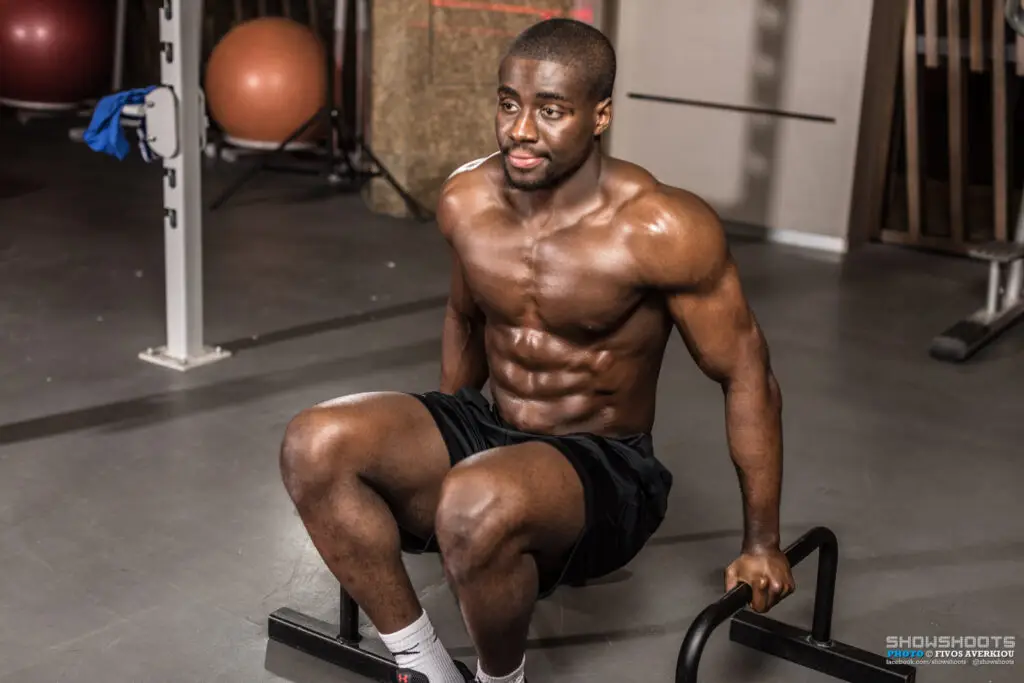
Your 6-Week Low-Impact Strength Training Program
This program is designed to build strength progressively while respecting your joints. Each phase builds on the previous one, gradually increasing challenge while maintaining joint-friendly principles. The 12Reps app can help you track your progress and ensure proper progression throughout the program
Weeks 1-2: Foundation Phase
Frequency: 3 sessions per week (Monday, Wednesday, Friday)
Focus: Learning movement patterns and building base strength
Session A: Full Body Foundation
Exercise | Sets | Reps/Duration |
Wall Push-Ups | 2 sets | 8-12 reps |
Chair-Assisted Squats | 2 sets | 8-12 reps |
Resistance Band Rows | 2 sets | 8-12 reps |
Glute Bridges | 2 sets | 10-15 reps |
Modified Plank (knees down) | 2 sets | 15-30 seconds |
Dead Bug | 2 sets | 5 each side |
Session B: Upper Body Focus
Exercise | Sets | Reps/Duration |
Incline Push-Ups | 2 sets | 6-10 reps |
Resistance Band Chest Press | 2 sets | 8-12 reps |
Band Pull-Aparts | 2 sets | 12-15 reps |
Seated Shoulder Press | 2 sets | 8-12 reps |
Wall Sit | 2 sets | 20-45 seconds |
Bird Dog | 2 sets | 5 each side |
Session C: Lower Body Focus
Exercise | Sets | Reps/Duration |
Bodyweight Squats | 2 sets | 5-10 reps |
Step-Ups (low step) | 2 sets | 6-8 each leg |
Single-Leg Glute Bridges | 2 sets | 5-8 each leg |
Calf Raises | 2 sets | 12-15 reps |
Side Plank (modified) | 2 sets | 10-20 seconds each side |
Pallof Press | 2 sets | 8-10 each side |
Weeks 3-4: Building Phase
Frequency: 3-4 sessions per week
Focus: Increasing volume and introducing new challenges
Session A: Full Body Strength
Exercise | Sets | Reps/Duration |
Push-Ups (full or incline) | 3 sets | 6-12 reps |
Bodyweight Squats | 3 sets | 8-15 reps |
Resistance Band Rows | 3 sets | 10-15 reps |
Single-Leg Glute Bridges | 3 sets | 6-10 each leg |
Plank | 3 sets | 20-45 seconds |
Dead Bug | 3 sets | 6-8 each side |
Session B: Upper Body Power
Exercise | Sets | Reps/Duration |
Push-Up Variations | 3 sets | 5-10 reps |
Band Chest Fly | 3 sets | 10-12 reps |
Inverted Rows | 3 sets | 5-10 reps |
Pike Push-Ups | 3 sets | 3-8 reps |
Bear Crawl | 3 sets | 10-20 steps |
Side Plank | 3 sets | 15-30 seconds each side |
Session C: Lower Body Power
Exercise | Sets | Reps/Duration |
Jump Squats (controlled) | 3 sets | 5-8 reps |
Reverse Lunges | 3 sets | 6-10 each leg |
Single-Leg Deadlifts | 3 sets | 5-8 each leg |
Lateral Step-Ups | 3 sets | 6-8 each leg |
Single-Leg Calf Raises | 3 sets | 8-12 each leg |
Russian Twists | 3 sets | 15-20 reps |
Weeks 5-6: Integration Phase
Frequency: 4 sessions per week
Focus: Complex movements and athletic integration
Session A: Athletic Foundation
Exercise | Sets | Reps/Duration |
Burpees (modified) | 3 sets | 3-6 reps |
Squat to Calf Raise | 3 sets | 8-12 reps |
Push-Up to T | 3 sets | 4-8 reps |
Reverse Lunge to Knee Drive | 3 sets | 6-8 each leg |
Mountain Climbers | 3 sets | 10-20 reps |
Plank to Downward Dog | 3 sets | 5-8 reps |
Session B: Unilateral Strength
Exercise | Sets | Reps/Duration |
Single-Arm Push-Ups (assisted) | 3 sets | 2-5 each arm |
Pistol Squat Progression | 3 sets | 3-5 each leg |
Single-Arm Row | 3 sets | 6-10 each arm |
Single-Leg Romanian Deadlift | 3 sets | 5-8 each leg |
Single-Arm Plank | 3 sets | 10-20 seconds each arm |
Turkish Get-Up (partial) | 3 sets | 2-3 each side |
Session C: Power and Conditioning
Exercise | Sets | Reps/Duration |
Squat Jumps (controlled landing) | 4 sets | 4-6 reps |
Clap Push-Ups (or explosive push-ups) | 4 sets | 2-5 reps |
Broad Jumps | 4 sets | 3-5 reps |
Lateral Bounds | 4 sets | 4-6 each direction |
Sprint Intervals | 4 sets | 10-20 seconds |
Hollow Body Hold | 4 sets | 15-30 seconds |
Session D: Recovery and Mobility
Activity | Duration |
Gentle Yoga Flow | 15-20 minutes |
Foam Rolling | 10-15 minutes |
Dynamic Stretching | 10-15 minutes |
Breathing Exercises | 5-10 minutes |
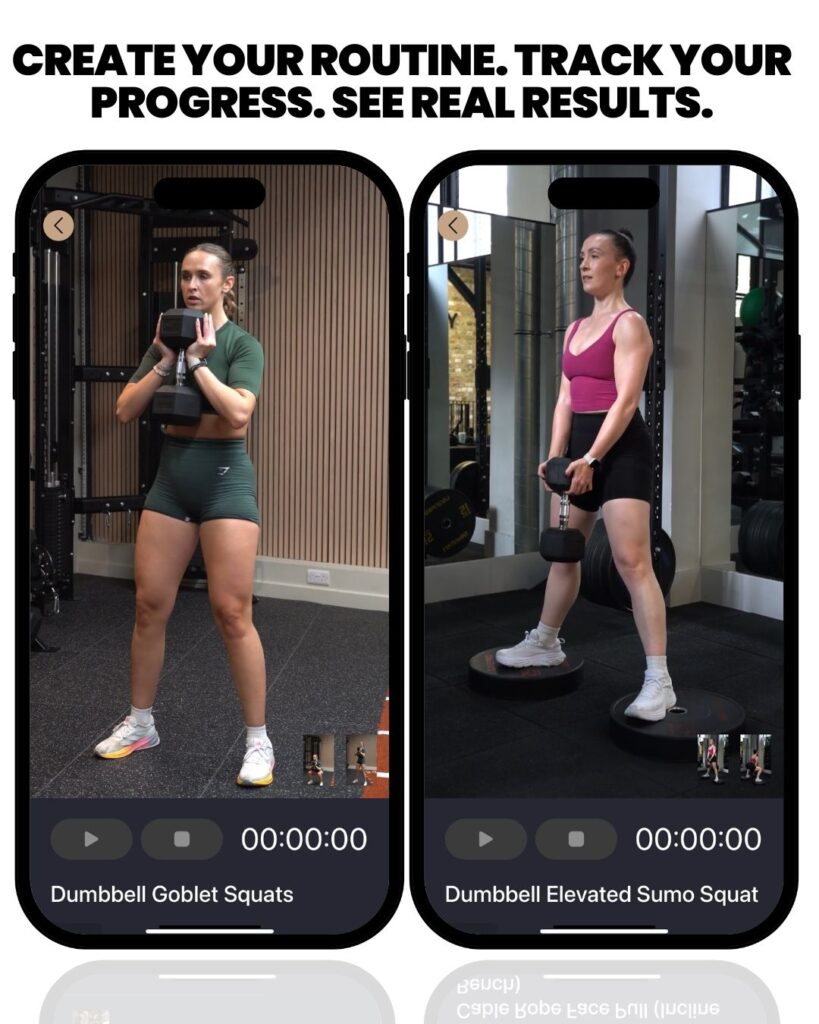
Programming Principles for Joint Health
Progression Strategies
The key to successful low-impact training is intelligent progression. Rather than simply adding weight, focus on these progression methods:
Volume Progression: Gradually increase sets and repetitions. Intensity Progression: Slow down movements or add pauses. Range of Motion Progression: Work toward full range of motion. Stability Progression: Progress from bilateral to unilateral exercises. Complexity Progression: Combine movements or add coordination challenges
Recovery and Adaptation
Low impact doesn’t mean low recovery needs. Your muscles still need time to adapt and grow stronger. Plan for at least one full rest day between intense sessions, and listen to your body’s signals.
Sleep, nutrition, and stress management are just as important as your training program. The 12Reps app can help you track not just your workouts, but also your recovery metrics to ensure you’re adapting optimally.
Monitoring Joint Response
Pay attention to how your joints feel during and after training. Some muscle soreness is normal and expected, but joint pain is not. If you experience joint discomfort, reduce intensity, check your form, or consider modifying the exercise.
Keep a training log that includes not just what you did, but how you felt. This information is invaluable for adjusting your program and preventing overuse injuries.
Common Mistakes and How to Avoid Them
Pushing Through Joint Pain
The biggest mistake I see is people pushing through joint pain because they think it’s necessary for progress. Joint pain is your body’s warning system – ignoring it leads to injury and setbacks.
Learn to distinguish between muscle fatigue (which is productive) and joint discomfort (which is counterproductive). When in doubt, err on the side of caution and modify the exercise.
Progressing Too Quickly
Enthusiasm is great, but patience is better. Your muscles adapt faster than your connective tissues, so what feels easy for your muscles might still be stressing your joints and tendons.
Follow the program progression and resist the urge to skip ahead. Building a solid foundation takes time, but it pays dividends in long-term progress and injury prevention.
Neglecting Proper Warm-Up
Low-impact training still requires proper preparation. Spend 5-10 minutes warming up with gentle movement and dynamic stretching before each session.
A good warm-up increases blood flow, raises muscle temperature, and prepares your nervous system for the work ahead. This is especially important for maintaining joint health and preventing injuries.
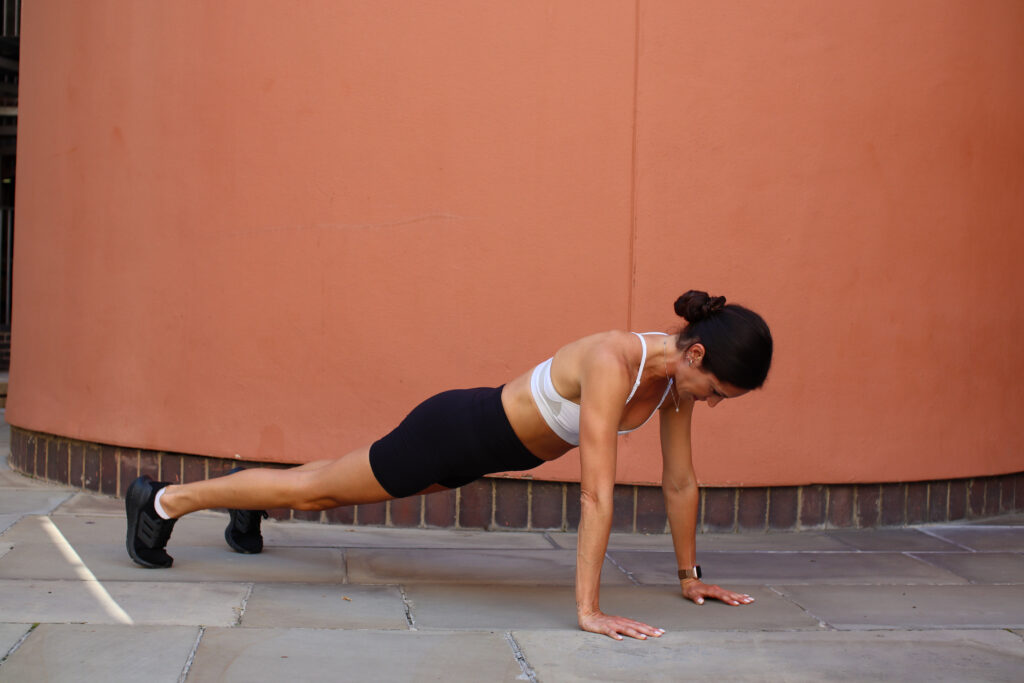
Low-impact strength training isn’t a compromise, it’s a smarter approach to building strength and muscle while preserving joint health. Whether you’re a professional athlete, recreational exerciser, or someone dealing with joint issues, these methods can help you achieve your strength goals safely and sustainably.
My background in Sport and Exercise Science, combined with a decade of training experience, has taught me that the most effective training is the one you can do consistently. Low-impact methods allow you to train regularly without the aches, pains, and setbacks that often derail fitness programs.
The 6-week program outlined here is just the beginning. As you build strength and confidence, you can continue progressing using the same principles: controlled movements, intelligent progression, and respect for your body’s signals.
Remember, strength training is a lifelong journey, not a destination. The habits you build now will serve you for decades to come. Start where you are, use what you have, and do what you can. Your joints, and your future self – will thank you.
Download the 12reps app now
